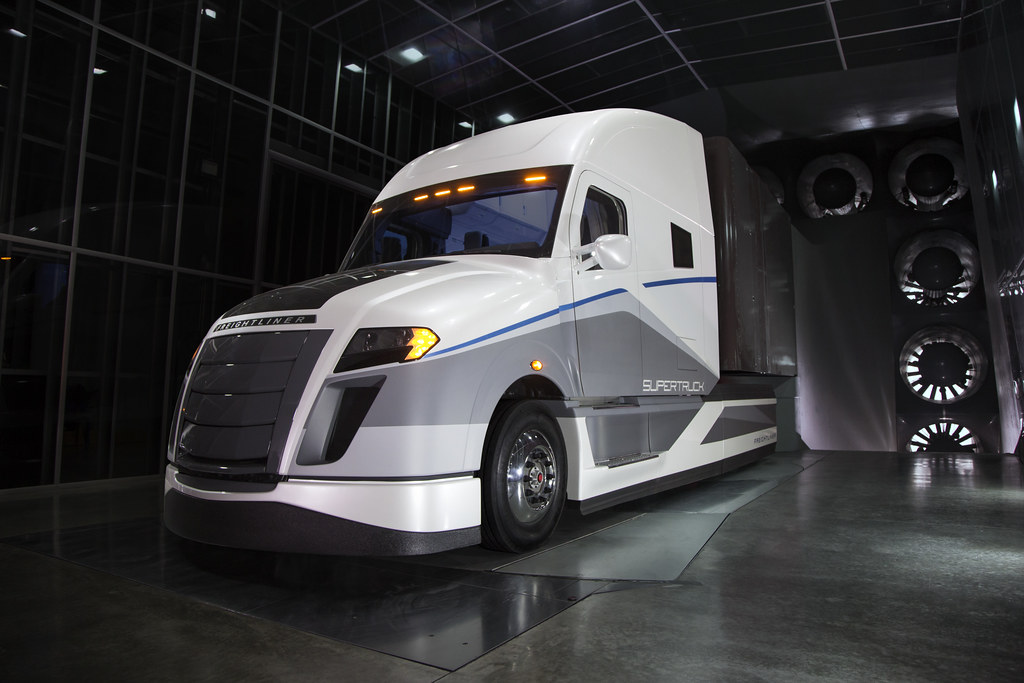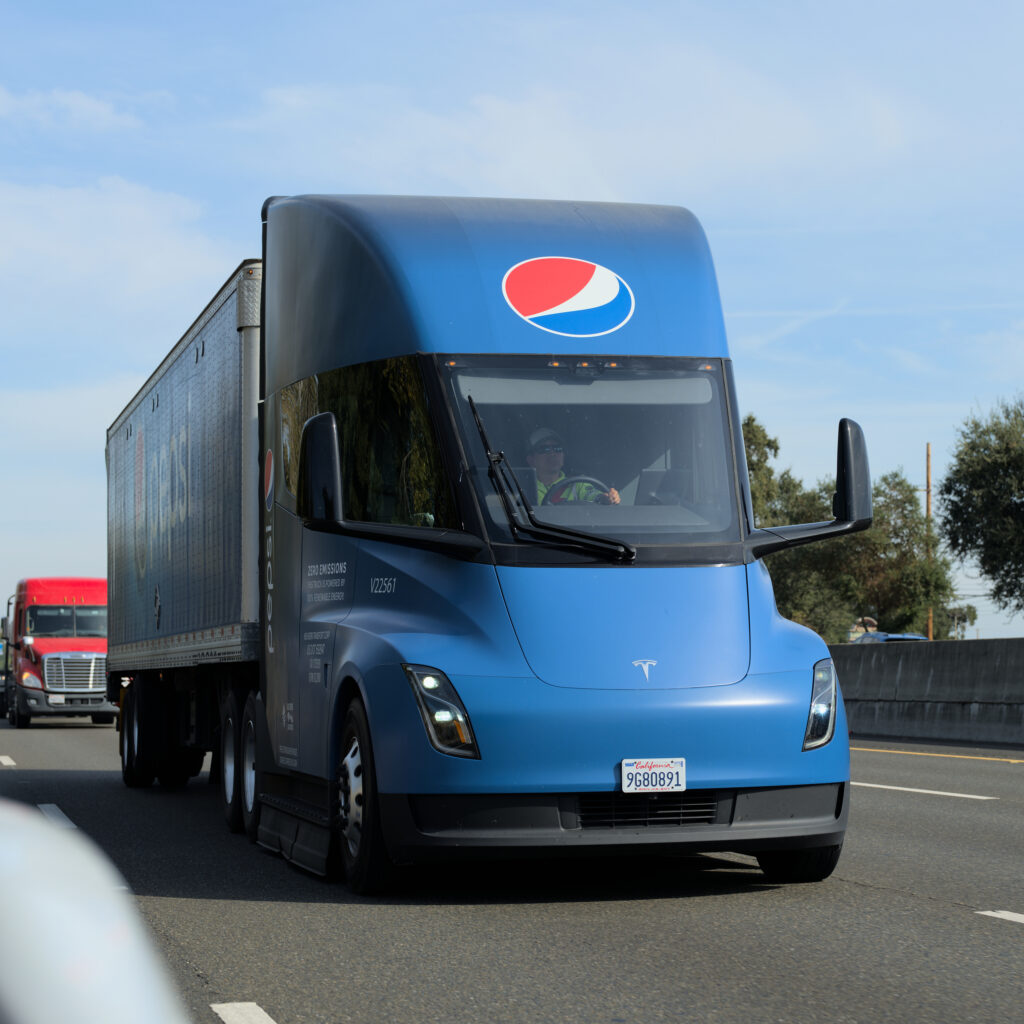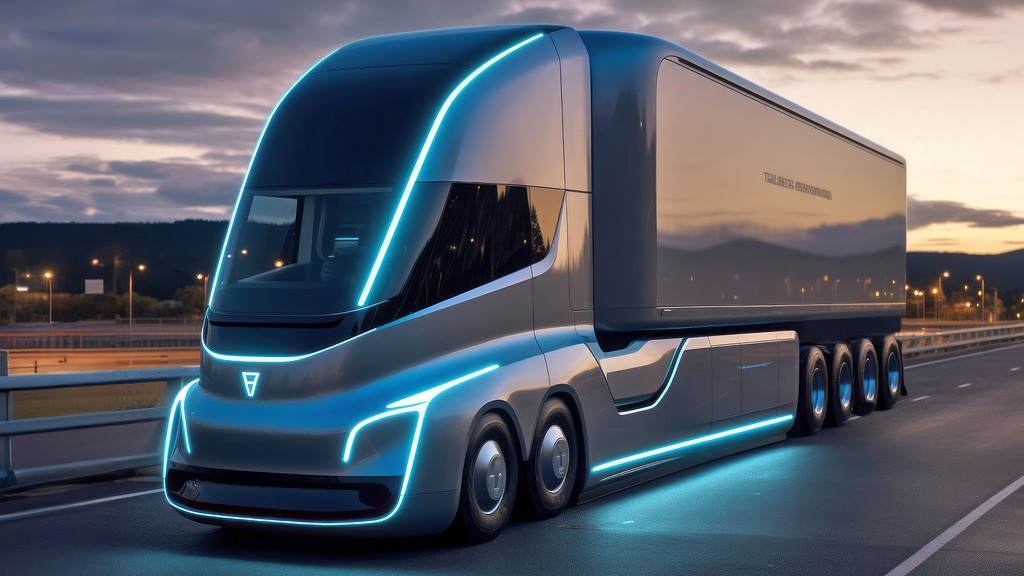Since its debut in 2017, the Tesla Semi has sparked passionate debates in the heavy-duty transportation industry. The revolutionary electric truck promises to disrupt a sector dominated by diesel engines, but skeptics remain vocal.
When Elon Musk officially announced mass production of the Tesla Semi would begin by the end of 2025, with ramp-up in 2026, industry heavyweight Bill Gates immediately voiced doubts about its feasibility, citing concerns over battery weight, driving range, and charging infrastructure.
But specs and numbers only tell part of the story. The real test lies in how the Tesla Semi performs on the road — particularly with the professionals who know trucking best: the drivers. Recently, a veteran trucker at SIA, a major U.S. less-than-truckload (LTL) carrier, tested the Tesla Semi on demanding urban routes, providing valuable insights into how the truck handles real-world challenges.
In this article, we’ll explore the Tesla Semi Gen 2’s design, performance, testing feedback, production updates, and why this $170K electric semi could truly transform the trucking industry.

The Tesla Semi: Industry Skepticism and Challenges
Why the Skepticism?
From the start, the Tesla Semi faced a mountain of skepticism. Experts questioned whether an electric truck could match diesel-powered competitors on power, range, and reliability. Concerns focused on:
- Battery Weight: Heavy battery packs add significant weight, potentially reducing payload capacity.
- Driving Range: Could electric trucks match the long distances diesel trucks cover without frequent recharging?
- Charging Infrastructure: Are enough fast chargers available, especially on long haul routes?
Bill Gates expressed these doubts publicly, reinforcing industry hesitation. Meanwhile, only around 300 Tesla Semis exist in limited operations—some as internal Tesla factory trucks and others in pilot tests with major companies like PepsiCo and Walmart.
The Importance of Real-World Testing
While specs matter, the ultimate proof is in day-to-day usability. Professional truck drivers face complex conditions including:
- Gridlocked city traffic
- Tight loading docks
- Multiple stops per day
- Heavy loads on steep grades
The Tesla Semi must prove itself under these demanding conditions to gain wide acceptance.
Tesla Semi Gen 2: What’s New and Improved?
Redesigned Cabin and Features
Tesla’s upcoming Gen 2 Semi introduces key upgrades:
- More Spacious Cabin: Larger windows improve visibility.
- Sleeper Option: Finally, a sleeper cab designed for long haul drivers.
- Full Self-Driving (FSD) Ready: The first heavy-duty truck with the potential for 100% autonomous driving.
These changes reflect feedback from testing and a drive toward making the Semi comfortable and practical for long-term use.
Enhanced Performance and Drivability
One of the standout features is the electric drivetrain’s smooth and powerful acceleration, with immediate torque and no lag from a stoplight. The Semi also boasts a tighter turning radius than traditional two-axle trucks, a surprising benefit for urban driving.
Real-World Testing by Veteran Truckers: The SIA Experience
Meet Tom Sturba — SIA Veteran Driver
Tom Sturba, a seasoned driver at SIA with a fleet of 7,000 trucks, was tasked with putting the Tesla Semi through its paces on busy urban routes, involving 10-15 stops daily with heavy traffic and tight docks.
Tom’s Impressions
After several days behind the wheel, Tom’s verdict was overwhelmingly positive:
- Power: The electric motors deliver strong pulling power and smooth acceleration.
- Agility: The Semi’s maneuverability exceeded expectations, handling city turns and docking easily.
- Technology: Tom adapted quickly to the dual-screen setup, praising the integrated navigation and camera systems.
- Preference: He now prefers driving the Tesla Semi over diesel trucks and hopes it will be his career vehicle.
Tom’s real-world experience provides a powerful endorsement that goes beyond numbers.

Tesla Semi Performance: The Numbers That Matter
Impressive Range and Charging
Recent tests show the Tesla Semi can cover over 800 kilometers (about 500 miles) on a single charge and charge from 5% to 80% battery in around 45 minutes.
For LTL operations, where trucks return to base daily, drivers may only need to charge once a week, drastically reducing downtime.
Low Maintenance and Operating Costs
Electric motors require far less routine maintenance than diesel engines. Combined with lower fuel costs and fewer moving parts, the Tesla Semi offers potential savings that could exceed $3.5 million in operating costs over the truck’s lifetime.
Production and Release Schedule: What to Expect
From Prototype to Mass Production
While Tesla Semi has been “in production” for years, most units so far are prototypes or pilot models. The upcoming Gen 2 Semi is the true mass production version, incorporating lessons learned from real-world testing with customers like PepsiCo.
Tesla’s production facility at the Nevada Gigafactory is nearly ready for full-scale manufacturing, and testing with logistics giants is wrapping up.
Design Updates and Configurations
Recent spy photos reveal:
- Refined front fascia and bumper
- Larger windshield and drop glass windows
- Sleeper cab integrated into the rear cabin space
- Multiple configurations with high and low roof options for different cargo needs
These refinements aim to balance driver comfort, aerodynamics, and operational efficiency.
Tesla Semi Gen 2: Multiple Range Options to Suit Every Operation
Tesla will offer the Semi in at least two range versions:
- 500 miles (800 km): Ideal for long haul routes.
- 300 miles (480 km): Tailored for regional or urban deliveries, lowering costs for smaller fleets.
This flexibility enables operators to choose a model that fits their business needs without paying for unnecessary range or features.
Is the $170,000 Price Tag Justified?
Power and Efficiency Redefined
Despite its hefty price, the Tesla Semi’s capabilities justify the investment:
- Gross Vehicle Weight Rating (GVWR) up to 80,000 lb
- Acceleration: Faster than diesel trucks, with no lag on grades.
- Fuel Savings: Potential to save up to 1 million gallons of diesel over a truck’s lifespan.
Elon Musk has called the Semi a “money-making machine,” emphasizing its role in cutting costs and emissions simultaneously.
Support from Major Industry Players
So far, Tesla Semi trucks have been deployed with companies including:
- PepsiCo
- DHL
- Martin Brower
- Costco
- SIA
- Walmart
- ABF Freight (ArcBest division)
These trials have yielded overwhelmingly positive results.

Case Study: ABF Freight’s 3-Week Tesla Semi Trial
ABF Freight conducted a 3-week trial covering nearly 4,500 miles on a variety of routes, including highway, regional, and rail shuttle operations. Key findings:
- Average 321 miles per day
- Energy efficiency of 1.55 kWh per mile — better than previous trials
- Strong performance on steep climbs, matching diesel trucks
- Excellent driver feedback on comfort, safety, and handling
This real-world evidence cements the Semi’s capability to handle both regional and long haul trucking tasks efficiently.
Why the Tesla Semi Is a Game-Changer for Trucking
Long Haul Electric Trucking Is Finally Here
Thanks to its large 850 kWh battery pack and efficient design, the Tesla Semi is the only electric truck capable of true long haul freight transport on a single charge. Competing models from Volvo and Freightliner can’t match this range or efficiency.
Full Self-Driving (FSD) Capability
With full FSD integration, Tesla aims to make trucking safer and easier. This could revolutionize the profession by reducing driver fatigue and increasing productivity, though regulatory hurdles remain.
Environmental Impact
With freight transport accounting for significant emissions, the Tesla Semi offers a cleaner alternative, supporting global efforts to reduce carbon footprints.
Frequently Asked Questions (FAQs)
Can the Tesla Semi replace diesel trucks entirely?
While skeptics doubt a complete replacement, Tesla Semi’s performance shows it can cover most applications — especially in regional and urban delivery. Its long range and power make it competitive even for long haul.
How long does it take to charge the Tesla Semi?
The Semi can charge from 5% to 80% in about 45 minutes using Tesla’s Megacharger network, making quick turnarounds possible during long trips.
What is the expected lifespan of the Tesla Semi battery?
Tesla batteries are designed for durability, expected to last several hundred thousand miles, aligning with trucking industry standards.
Final Thoughts: The Tesla Semi Is Poised to Disrupt Trucking
The $170K Tesla Semi Gen 2 brings powerful performance, driver-friendly design, and cutting-edge technology to an industry ripe for disruption. With glowing real-world driver feedback and strong operational data from major fleets, it’s clear the Tesla Semi is more than just a concept — it’s a practical solution ready to challenge diesel dominance.
Which feature excites you most? Is it the remarkable range, the lightning-fast acceleration, or the promise of full self-driving trucks? Drop your thoughts below!
FAQs
1. What is the Tesla Semi Gen 2?
The Tesla Semi Gen 2 is the latest version of Tesla’s fully electric Class 8 semi-truck, featuring improved range, a redesigned cabin, and advanced driver-assist technology.
2. How much does the Tesla Semi cost?
The Tesla Semi Gen 2 is priced around $170,000, making it competitive with traditional diesel trucks when factoring in operating savings.
3. What is the driving range of the Tesla Semi Gen 2?
Tesla offers two range options: approximately 300 miles (480 km) for regional routes and 500 miles (800 km) for long haul operations on a single charge.
4. How long does it take to charge the Tesla Semi?
With Tesla’s Megacharger network, the Semi can charge from 5% to 80% battery in roughly 45 minutes.
5. Can the Tesla Semi handle heavy loads?
Yes, the Semi is rated for a Gross Vehicle Weight Rating (GVWR) of up to 80,000 pounds, matching traditional diesel trucks.
6. What makes the Tesla Semi different from diesel trucks?
The Semi offers instant torque, quieter operation, lower maintenance costs, zero emissions, and the potential for full self-driving capabilities.
7. Is the Tesla Semi suitable for long haul trucking?
Yes, with its 500-mile range option and fast charging, it is designed to meet the demands of long haul freight transport.
8. How does the Tesla Semi perform in urban environments?
The Semi’s tight turning radius and responsive electric drivetrain make it highly maneuverable for city routes and frequent stops.
9. What are the maintenance benefits of the Tesla Semi?
Electric motors require less maintenance than diesel engines, reducing downtime and long-term repair costs significantly.
10. Will Tesla provide charging infrastructure for Semi trucks?
Tesla is developing a dedicated Megacharger network tailored for the Semi to enable rapid charging along major freight corridors.
11. How many Tesla Semis are currently in operation?
There are around 300 Tesla Semi trucks deployed in pilot programs and limited operations with major logistics companies.
12. Who are some of the major Tesla Semi customers?
PepsiCo, Walmart, DHL, Costco, and ABF Freight are among companies testing or operating Tesla Semis.
13. Does the Tesla Semi come with a sleeper cab?
Yes, the Gen 2 Semi introduces an optional sleeper cab designed for long haul drivers.
14. What safety features does the Tesla Semi have?
The Semi includes advanced safety technologies like automatic emergency braking, lane keeping assist, and enhanced autopilot features.
15. Is the Tesla Semi equipped with Full Self-Driving (FSD) technology?
Yes, the Gen 2 Semi is built to support Tesla’s Full Self-Driving capability, pending regulatory approval.
16. How does the Tesla Semi impact the environment?
It produces zero tailpipe emissions, helping reduce greenhouse gases and air pollution compared to diesel trucks.
17. What is the expected lifespan of the Tesla Semi’s battery?
Tesla’s battery packs are designed to last several hundred thousand miles, comparable to or exceeding diesel engine lifespans.
18. Can the Tesla Semi operate in extreme weather conditions?
The Semi is engineered to perform reliably in a range of conditions, though Tesla continues testing for extreme cold and heat.
19. How does the Tesla Semi affect driver comfort?
The redesigned cabin features larger windows, improved ergonomics, and modern tech interfaces for a more comfortable driving experience.
20. What charging options are available besides Tesla Megachargers?
Tesla Semi can also be charged at compatible DC fast chargers, though Megachargers offer the fastest recharge times.
21. How soon will Tesla Semi Gen 2 be widely available?
Mass production is expected to ramp up in late 2025 into 2026, with deliveries to fleet customers soon after.
22. Is Tesla Semi a good investment for fleet operators?
Given its fuel savings, lower maintenance costs, and growing infrastructure, many fleet operators see the Tesla Semi as a smart long-term investment.
Read More:
- Elon Musk’s Electric Plane Revealed: How It Changes 2026 Transport! SHOCK the Entire Industry
- Tesla clarifies LA car carrier fire started in diesel semi, not EV batteries
- SpaceX Drops Bombshell Upgrades on Starship Booster V3 Shocked the Industry! Flight 10 in Days
- $6,789 Tesla Flying Car FINALLY Coming In 2026 At Giga Texas! Nobody Told You What’s Inside
- Tesla pushes crazy ‘Luxe’ incentive package on flagship Model S and X

